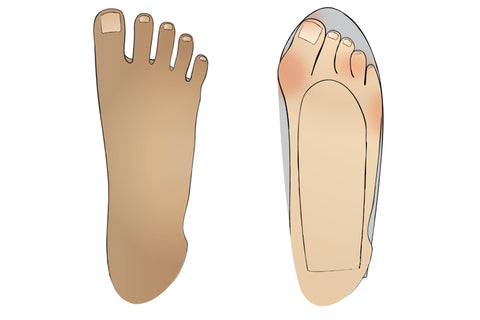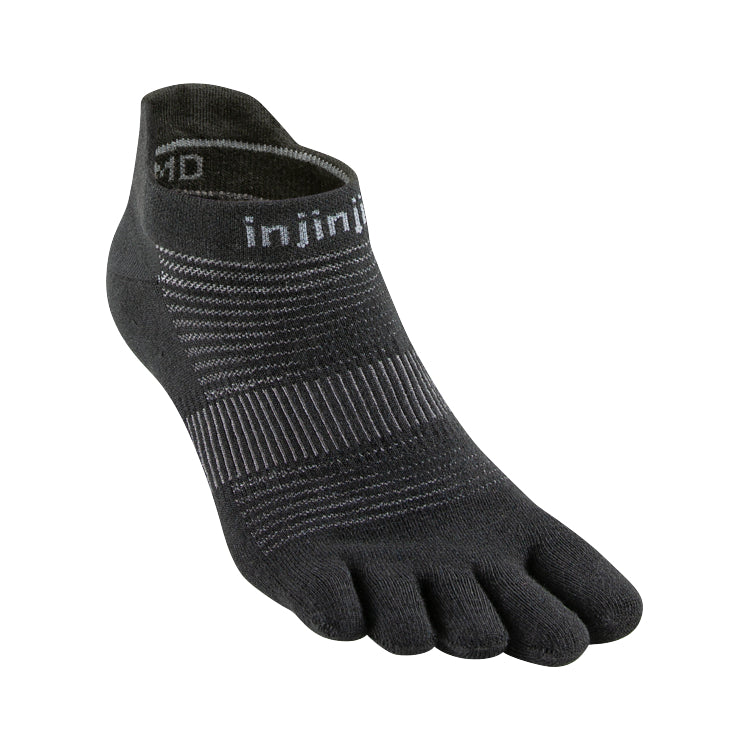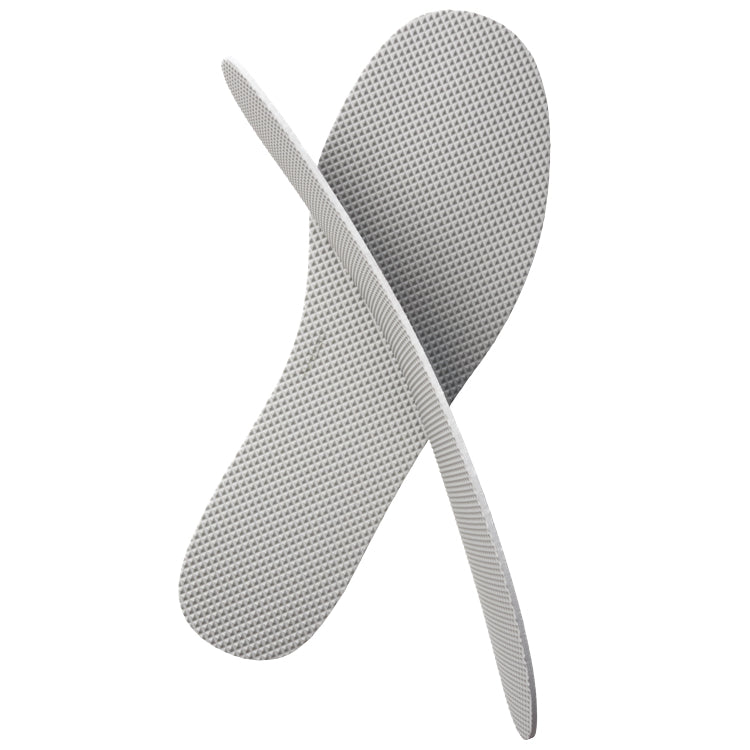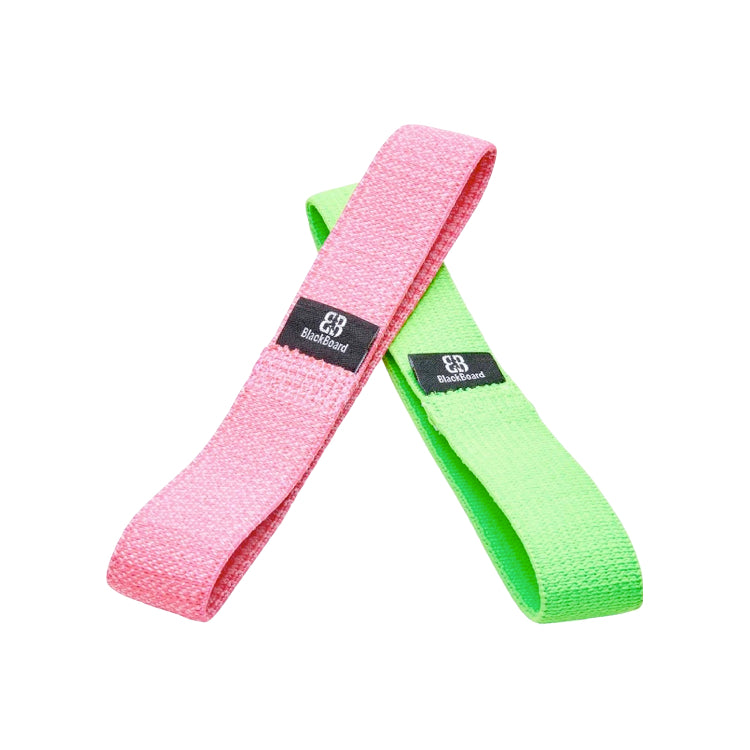
This is the third installment in our ongoing series in which we examine foot-related research studies published many decades ago. This study, conducted by Clifford S. James, is called “Footprints and Feet of Natives of the Solomon Islands” and was published in The Lancet in 1939. The researcher, James, worked in the Solomon Islands region for over a decade. This study was conducted out of the Melanesian Mission Hospital on the island of Malaita, in what was then known as the British Solomon Islands. The purpose of this study was to compare the feet of unshod Solomon Islanders with shoe-wearing Europeans and assess possible causes of flat feet.
Disclaimer: Like the other classic studies we’ve reviewed on this site, the language describing research participants in this study, though commonly used at the time of publication, is, in many cases, no longer used or accepted in contemporary society. Please note that the passages from the study we’ve included below have been modified to reflect current norms for addressing individuals or groups.
James begins his article with a physical description of a typical Solomon Islander’s foot. He examined the feet of “65 unselected, average, and normal” Solomon Islanders, and found that
The toes of a [Solomon Islander] are straight, lie parallel with the ground, and are spread out so that the inner and outer borders of the feet are two straight lines. In fact, all the toes lie in lines radiating from the centre of the heel. Occasionally the great toe is abducted, so that the inner border of the foot is concave medially […] On wet slippery ground, where a European's foot would meet with disaster, a [Solomon Islander's] foot remains firm.
James also examined Solomon Islanders’ footprints and compared them to the footprints of a typical European. He found that
The most obvious difference between the two footprints as seen on the beach is that the European's foot is always turned out to various degrees when walking. If a European places his footprints in alignment with those of a [Solomon Islander] he feels that he is walking very "pigeon-toed." A [Solomon Islander's] foot has its inner border pointing straight ahead, with slight variations one way or the other.
As a chiropractor, I’m trained to notice joint alignment, as faulty joint alignment can lead to numerous musculoskeletal problems throughout the body. Foot splay, the turning out of the feet, is a common sight in Western societies and is a clear indication of lower extremity dysfunction. Muscle imbalances, sedentary living, and inappropriate footwear may all contribute to this alignment problem.
James makes an interesting observation about Solomon Islanders’ ability to negotiate small obstacles during gait. He states that
Whatever the nature of the ground, the [Solomon Islander] walks with ease—e.g., a European treading on a pebble with a diameter a third of the width of the foot treads only on the pebble, whereas a [Solomon Islander's] foot "flows" all over and round the pebble and adapts itself to it unconsciously and without discomfort, the sole making contact with the ground behind and on the sides, and the toes in front.
He adds
Shoes compress the foot and interfere with the blood supply of the muscles, structures become shortened, and the foot loses its pliability, and becomes less resilient and so less able to adapt itself to varying strains and positions. A [Solomon Islander's] foot, free to spread out, maintains its pliability and can meet these changing circumstances without effort.
The vast majority of us, regardless of where we were born, enter this world with perfect feet. It’s how we treat our feet during our developmental phase and beyond that dictates foot health and appearance, notes James:
The facts that these [Solomon Islanders], while possessing an arch, are free from flat-foot, and that the unshod European's foot, at least in childhood, differs little from that of a [Solomon Islander] suggest that the cause of flat foot lies not so much in the formation of our foot as in our ill-treatment of it.
James comes to the very logical conclusion that
The prevention of flat-foot must be to allow the foot to develop normally by the adoption of suitable foot-gear [emphasis added], which, while it holds the posterior part of the foot firmly, allows plenty of room for the free movement of the toes and the forepart of the foot—i.e., to approach as closely as possible the conditions under which a [Solomon Islander's] foot works.
Join us again next time to learn more about another fascinating classic study and to see what conclusions the researchers draw about the effects of footgear on natural foot function.

WANT TO IMPROVE YOUR FOOT HEALTH?
Let the team at Natural Footgear help you! Subscribe to our newsletter for the latest offers and helpful info, and sign up for our FREE email courses on various topics and foot health conditions.
Sign Up →
Want to Improve Your Foot Health?
We are here to help you every step of the way. Get our newsletter for the latest offers and helpful info, and sign up for our FREE email courses on various topics and conditions, including bunions, hammertoes, neuromas, plantar fasciosis, shin splints, ingrown toenails, and more.
Sign Up →
 This is the first installment in what will be an ongoing series of articles examining classic research studies in the field of natural foot form and function. Many of the articles that will be reviewed here were published in reputable journals that still exist today. Many of these studies, which range in size and design, were published over 40, 50, 60, or, in this case, 100 years ago. The studies...
Read more
This is the first installment in what will be an ongoing series of articles examining classic research studies in the field of natural foot form and function. Many of the articles that will be reviewed here were published in reputable journals that still exist today. Many of these studies, which range in size and design, were published over 40, 50, 60, or, in this case, 100 years ago. The studies...
Read more












I am a physical therapist who has been working on her feet for about four years now. At 58, I am amazed to see how much they have changed and how much stronger they are. I am delighted to read these classic studies on “unshod feet.” It is fairly shocking to realize how off-base I was as a younger practitioner who knew no better and to know how few people are aware of the potential of strengthening and improving feet. A patient recently introduced me to “Correct Toes” and I have been using them and recommending them to other patients. Great blog, great website, great tools. Thanks!
Hi, Liz,
Thank you for your comment. And thank you for your very kind words! Much obliged! I’m so glad to hear that you (and by extension, your patients) are benefitting from natural foot health concepts.
Kind regards,
Marty Hughes, DC
It seems that, as a society, we are moving less and less over time. What’s the impact of a sedentary lifestyle (especially lots of sitting) on foot posture, muscle function, and long-term foot health?
Hi, Chuck. You’re absolutely right to note that we, as a society, are moving less than ever before, and our feet—designed for continuous, varied motion—are among the first to feel the consequences. When we spend long stretches of the day sitting, the complex web of muscles, tendons, ligaments, and nerves within our feet receives far less stimulation than it needs to stay strong and responsive. The intrinsic foot muscles—those responsible for maintaining healthy arch shape, toe alignment, and overall stability—can begin to weaken, much like any other underused muscle group. Circulation to the feet may also diminish, and joint mobility can decline over time, setting the stage for stiffness, imbalance, and a gradual loss of natural foot dexterity.
Over the long term, this reduced engagement can alter foot posture and function in subtle but meaningful ways. Collapsed arches, shortened or weakened toes, and diminished sensory feedback from the soles are all common outcomes of too much sitting and too little varied movement. Restoring balance starts with simple, consistent steps: Spending more time barefoot or in naturally shaped, flexible footwear; incorporating foot-strengthening exercises into your daily routine; practicing simple stability drills at home; and reintroducing diverse terrain underfoot whenever possible. These habits help “wake up” the feet, reinvigorate the postural system, and reestablish the connection between grounded, active feet and the body’s overall vitality. We hope this answer helps!
Yours in Foot Health,
Drs. Marty & Robyn Hughes